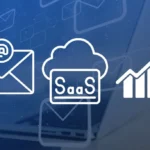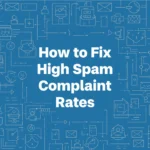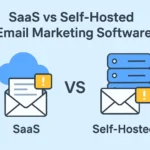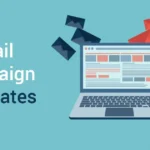Level up your business with team@relayzo.com
Level up your business with team@relayzo.com

One of the most effective methods of creating new leads, developing business relations and expanding the customer base is cold emailing, yet it is also one of the most complex ones. And you are not the only one who has ever asked the question of how many cold emails is it good to send in a day? It is a question to which nearly every marketer, founder, and sales professional can answer in the affirmative at some time or another.
Send too little and your reach will not be felt. Send too few and you will run the risk of landing up in spam or blacklisting your domain. So, where is the sweet spot? It is time to take a closer look at this issue and rediscover the ways of determining the most appropriate number of email messages every day that you can send through your cold outreach strategy without jeopardizing your sender reputation or lowering your response rates.
We should first define the meaning of cold emails before we can start playing with the numbers. A cold email is an unsolicited email message that is sent to a person that does not know you. It is similar to approaching a person during a networking party and being polite and professional, yet surprising.
A cold email is not spam when properly done. It is a real one trying to initiate a conversation, a relationship or a way of providing value-adding solutions. With that said, since these emails are sent to individuals who did not opt in, email suppliers (Gmail and Outlook) monitor them. When you send in an odd manner, you negatively impact your deliverability. This is the reason why it is so important to pace your sends.
To be frank, it is difficult not to be enticed to send out hundreds of cold emails simultaneously. It is not that there should be fewer replies after all. Not exactly. Google and Microsoft providers of email are keen on the sending activities. When you suddenly send hundreds of similar emails to new acquaintances, they will be identified as spamming them by their algorithm.
Here’s what can happen:
The moral of the story: when your emails fail to get in inboxes, there is no point in how great your offer may be; no one will see it. That is why volume is not the key to the success of cold emailing, but smart scaling.
You can not start by sending 200 emails per day when you are launching a new cold email campaign (especially with a new domain). It is a pain that you must warm up to your domain and your sender reputation. Consider it as becoming gradually acquainted with the email world. You have to show email providers that you are a valid sender with authentic communication habits.
The following is a safe and effective warm up program:
Week | Emails Per Day (Per Account) | Goal |
Week 1 | 10–20 | Establish trust and monitor delivery |
Week 2 | 30–50 | Gradually increase sending volume |
Week 3 | 60–80 | Stabilize open and reply rates |
This warm-up period may appear to be tedious, but it will be an investment. The reward is a preferred inbox position and a durable reputation of the sender.
When you are on a self-hosted platform such as Relayzo, then you can safely automate your warm-up process. Relayzo recreates the behavior of a real email experience, such as opening, responding, and spacing out outbound mail, which will establish a good reputation with a sender more quickly.
When you have gained trust with email providers, you can begin sending more emails a day. The optimal number of cold emails per day that should be sent out at this stage is 100-200 emails per day per account. You cannot, however, go over to 20 to 200 in one night. Slowly raise your daily quota by 2030 emails every few days whilst maintaining a check on your metrics such as:
When your figures remain steady, then that is an indicator that you have the capability to deal with larger volumes. You must not forget, however, that cold emailing is not only a matter of quantity. It is all about the quality of targeting and message. 100 personalized, value mails will work better than 1000 generic emails all the time.
In case your business or agency wants to send thousands of emails per day, you can do it, safely by distributing the volume of emails among many accounts or domains.
For example:
This is how each of the domains will not be overloaded and the reputation of your sender will remain intact. This is simple with Relayzo (and other self-hosted systems) because you have the ability to manage multiple domains, monitor performance, and auto-rotate sending. It is as though you were driving your outreach with a number of safe, independent engines.
When you are mailing over 250-300 cold emails in one day in one inbox, you are going into the danger zone. Even seasoned cold email marketers seldom get past that number on a single account. Pushing limits can:
Rather, dream of sustainable scaling. It is preferable to have many healthy accounts of sending, than one congested one.
It is something that even amazes many that the majority of the responses are not the first email that was sent. Research demonstrates that 60-70 percent of the responses to cold emails are as a result of follow-ups rather than first-time mail. Therefore, when you count your daily number of emails, you must not ignore follow ups.
Example:
Now that is 180 emails in a single day – not 100. Ensure that your schedule (as well as the tool you use to send an email) is capable of managing that amount without going past safe limits.
It is easy to manage this with the help of a self-hosted email marketing application and an automated follow-up system which could automatically send follow-ups to non-responders to save time and consistently reach out to them.
The real question you should ask is how many cold email messages you’ve sent.
Strong deliverability metrics can be identified by the following:
You may need to slow down if your opening rate suddenly drops or you begin receiving bounces. Verify your list and your sending site’s health.
These are some of the best deliverability practices:
Here’s how many cold email you should send a day, depending on your system:
Scenario | Recommended Daily Emails | Notes |
New Startup / New Domain | 20–50 | Warm-up period — build trust |
Small Business or Freelancer | 100–150 | Use one or two accounts |
Growing Agency / SaaS | 500–1,000 | Spread across multiple domains |
Established Sales Team | 1,500–2,000+ | Requires advanced setup and tracking |
Remember that this includes both new emails and follow ups.
If there’s a golden rule in cold emailing it is this: personalization wins. You could send out 500 generic emails to get just 1% in response. You could send out 50 personalized emails that directly address someone’s concerns and book 5-10 qualified meeting. It’s all about thoughtful outreach.
Use these personalization methods:
You can dramatically increase the success of your cold emails by combining personalization and intelligent sending volume.
If you want to know how to set your daily email limit, this is the formula that will help:
Daily Emails = 150 x (number of accounts)
Take for instance:
Add in your follow ups and you will easily reach thousands upon thousands of meaningful touchpoints a month, while keeping delivery healthy.
Often, more is not always better. If you are experiencing:
The domain health can be restored by a cooling-off phase of 2 to 3 days.
How many emails do you need to send each day that are cold? There is no one size fits all. The right amount will depend on your goals, your tools, and your domain’s health. This is a quick overview:
Relayzo will simplify your life if you manage multiple campaigns, clients or domains. This includes everything from tracking and domain management through to analytics and automated follow ups. This is a perfect solution for those businesses that wish to send cold emails in greater numbers without having to worry about deliverability.
Cold emailing shouldn’t be about flooding inboxes. It’s important to build relationships that result in results. Start small. Be consistent. Then, scale it up.




















Relayzo is a smart, reliable, and innovative solution tailored to meet all your email marketing needs. With its intuitive interface and powerful features, it helps you create, manage, and optimize campaigns effortlessly.
Copyright 2025 © Relayzo || Designed by Innovteams